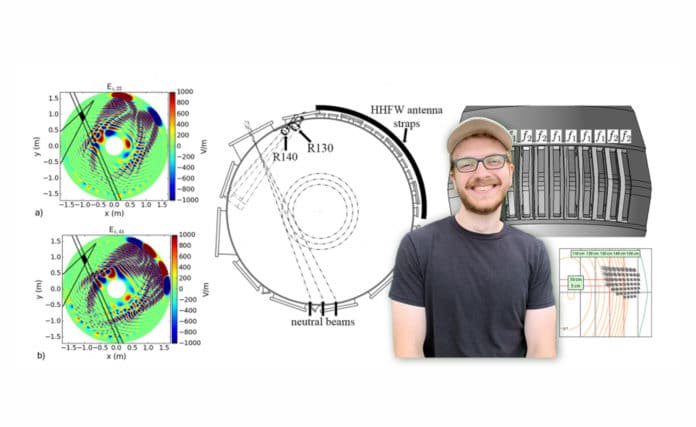Fusion reactions are the primary energy source of stars. The stars emit this energy into space as electromagnetic radiation, including visible light, heat, ultraviolet light, and radio waves. Radio waves frequency range from about 3,000 cycles per second, or 3 kilohertz, up to about 300 billion hertz, or 300 gigahertz.
To validate the impact of rf waves, it is essential to measure them. Scientists at the U.S. Department of Energy’s (DOE) Princeton Plasma Physics Laboratory (PPPL) have developed a path-setting way for measuring radio waves in fusion plasmas. The discovery could enhance future experiments that could result in bringing energy from fusion to Earth.
Grant Rutherford, a first-year graduate student at the Massachusetts Institute of Technology (MIT), said, “If our method turns out to work, it would be a very useful tool for many fusion reactors.”
“Key to predicting the impact of RF waves is measuring the fluctuations, or swings, they create in the density of fusion plasmas. Once we have those fluctuations, we would be able to work backward to see what those RF fields were that created the fluctuations.”
Although the swings occured by high-frequency rf waves are too rapid to measure. Hence, scientists created beat waves by launching two waves at different frequencies. By doing so, they were able to produce measurable swings.
Rutherford said, “If we were able to both create a beat wave fluctuation and measure it, we would have a new tool for validating predictions for RF heating and current drive.”
PPPL physicist Nicola Bertelli, a co-author of the paper, said, “Such measurements would have wide-ranging benefits. For example, they could facilitate the study of the performance of RF wave actuators.”
David Smith, a University of Wisconsin physicist and co-author of the paper, said, “Moreover, Our calculations provide an initial assessment of the technique and motivate follow-up experiments on NSTX-U.”
Scientists later created a 2D synthetic version of a 2D beam emission spectroscopy (BES) diagnostic to test their newly developed technique. The BES diagnostic evaluated simulated RF injections into the plasma. They wanted to understand and improve the ability to measure the RF field waves that create the swings.
Rutherford said, “We’re hoping that by increasing our ability to measure, we will increase our ability to understand heating and current drive processes, but we’re leaving that to future work. Such work could also show whether the BES diagnostic the scientists based their model on could measure the density swings in actual fusion plasmas, or whether some other diagnostic would do the critical job better.”
Journal Reference:
- Grant Rutherford et al. Scoping study of detecting high harmonic fast waves in NSTX-U hot core plasma directly using beam emission spectroscopy. DOI: 10.1063/5.0040399
